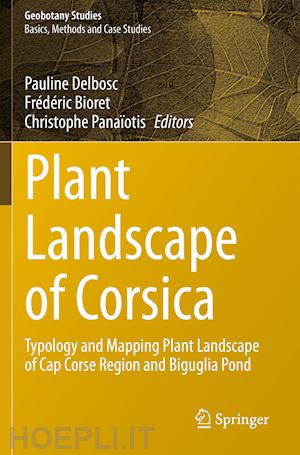
Questo prodotto usufruisce delle SPEDIZIONI GRATIS
selezionando l'opzione Corriere Veloce in fase di ordine.
Pagabile anche con Carta della cultura giovani e del merito, 18App Bonus Cultura e Carta del Docente
Since the 1970s and particularly the works of Tüxen (1978) and Géhu & Rivas-Martínez (1981), dynamico-catenal phytosociology has facilitated the integration of vegetation dynamics by more precisely describing the trajectories of vegetation series. A national habitat mapping program (CarHAB), launched by France’s Ministry of Ecology, aims to map the vegetation and vegetation series of metropolitan France at a scale of 1: 25,000 by 2025. In this context, Corsica has been selected as a pilot region, due to its unique characteristics regarding Mediterranean and alticole vegetation.
This book describes in detail the vegetation series and geoseries (ecology, structure, dynamic trajectories, effects of anthropogenic factors on vegetation dynamics, catenal positioning in the landscape) of two Corsican sectors: Cap Corse and Biguglia pond. These two study sites were selected using two methods:
• For Cap Corse, the typology and mapping are based on an inductive approach, which seeks to understand the dynamics of vegetation by drawing on the mature, substitutional, pioneering and anthropogenic associations likely to exist within a tessellar envelope. These various dynamic stages characterize “the vegetation series” (sigmetum or synassociation), the fundamental unit of symphytosociology (Géhu 2006; Biondi 2011). The aim of symphytosociology is, therefore, to define the vegetation series; in other words, it seeks to identify the repetitive combinations of syntaxa under homogeneous ecological conditions.
• For Biguglia pond, the typology and mapping are based on a deductive approach, which combines (under SIG) the ecological descriptor maps with the vegetation mapping, in order to reveal the tesselas and the natural potential vegetation that underlies them. Thanks to the improvement of GIS techniques, this approach has been frequently used to characterize plant landscapes from vegetation to vegetation geoseries since the 2000s, with applications to the conservation management of natural and semi-natural environments.
- General Introduction. - Vegetation and Vegetation Series of Cap Corse (With Mapping at 1:25,000). - Typology and Mapping of Plant Landscape of Biguglia Pond: Application to Planning and Conservation Management. - Discussion. - Conclusion. - General Conclusion. - Appendix: Synsystematic Scheme of Cap Corse and Biguglia Pond.











Il sito utilizza cookie ed altri strumenti di tracciamento che raccolgono informazioni dal dispositivo dell’utente. Oltre ai cookie tecnici ed analitici aggregati, strettamente necessari per il funzionamento di questo sito web, previo consenso dell’utente possono essere installati cookie di profilazione e marketing e cookie dei social media. Cliccando su “Accetto tutti i cookie” saranno attivate tutte le categorie di cookie. Per accettare solo deterninate categorie di cookie, cliccare invece su “Impostazioni cookie”. Chiudendo il banner o continuando a navigare saranno installati solo cookie tecnici. Per maggiori dettagli, consultare la Cookie Policy.